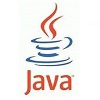Centos7 yum安装 Lnmp以及Lamp
首先配置防火墙
CentOS 7.0默认使用的是firewall作为防火墙
1.关闭firewall:
systemctl stop firewalld.service #停止firewall
systemctl disable firewalld.service #禁止firewall开机启动
或者开启某端口
firewall-cmd --permanent --add-port=50000/tcp
用该命令查询firewall-cmd --permanent --query-port=50000/tcp
如果是yes就是添加成功,如果是no就是没成功
成功后重载防火墙firewall-cmd --reload
2.关闭SELINUX
vi /etc/selinux/config
#SELINUX=enforcing #注释掉
SELINUX=disabled #增加
:wq! #保存退出
setenforce 0 #使配置立即生效
Lnmp安装
1.安装nginx
yum install yum-priorities -y
wget http://nginx.org/packages/centos/7/noarch/RPMS/nginx-release-centos-7-0.el7.ngx.noarch.rpm rpm -ivh nginx-release-centos-7-0.el7.ngx.noarch.rpm yum install nginx
2.启动nginx
systemctl start nginx.service #启动nginx
systemctl stop nginx.service #停止
systemctl restart nginx.service #重启
systemctl enable nginx.service #设置开机启动
3.更改nginx端口号(根据自己需求)
cd /etc/nginx/conf.d/
vim default.conf
把listen 80改成listen 81
然后重启nginx
systemctl restart nginx.service #重启nginx
4.访问http://ip:81即可看到nginx首页
5.下一步安装PHP-fpm
yum install php-fpm
安装完毕后
systemctl start php-fpm.service #启动php-fpm
systemctl enable php-fpm.service #设置开机启动
6.更改nginx配置文件识别php vi /etc/nginx/conf.d/default.conf,把之前的#给去掉就可以了,顺手改一下fastcgi_param
location ~ \.php$ {
root html;
fastcgi_pass 127.0.0.1:9000;
fastcgi_index index.php; fastcgi_param SCRIPT_FILENAME /usr/share/nginx/html/$fastcgi_script_name; include fastcgi_params; }
7.访问test.php
在 /usr/share/nginx/html中新建一个test.php <?php echo 123;?>
访问http://ip:81/test.php即可看到nginx中的php页面
8.负载配置
进入 vi /etc/nginx/conf.d/default.conf
upstream site{
server 172.16.170.138;
server 172.16.170.139;
}
server { listen 80; server_name ieccohomo.com; #charset koi8-r; #access_log /var/log/nginx/log/host.access.log main; location / { root /usr/share/nginx/html; index index.html index.htm; proxy_pass http://ieccohomo.com; }
9.域名修改 把上面(ieccohomo.com)site,localhost改为www.a.com
Lamp安装
1.安装apache
yum install httpd #根据提示,输入Y安装即可成功安装
systemctl start httpd.service #启动apache
systemctl stop httpd.service #停止apache
systemctl restart httpd.service #重启apache
systemctl enable httpd.service #设置apache开机启动
2.安装mariadb(MySQL)
yum install mariadb mariadb-server #询问是否要安装,输入Y即可自动安装,直到安装完成
systemctl start mariadb.service #启动MariaDB
systemctl stop mariadb.service #停止MariaDB
systemctl restart mariadb.service #重启MariaDB
systemctl enable mariadb.service #设置开机启动
3.修改mysql密码,安装后默认为空
修改mysql密码:set password for 'root'@'localhost'=password 'root';
mysql授权远程连接(navicat等): grant all on *.* to root identified by 'root';
4.安装PHP以及组件,使PHP支持 MariaDB
yum install php php-mysql php-gd libjpeg* php-ldap php-odbc php-pear php-xml php-xmlrpc php-mbstring php-bcmath php-mhash
#这里选择以上安装包进行安装,根据提示输入Y回车
systemctl restart mariadb.service #重启MariaDB
systemctl restart httpd.service #重启apache
5.访问测试
cd /var/www/html
vi index.php #输入下面内容
<?php
phpinfo();
?>
:wq! #保存退出
在客户端浏览器输入服务器IP地址端口号






